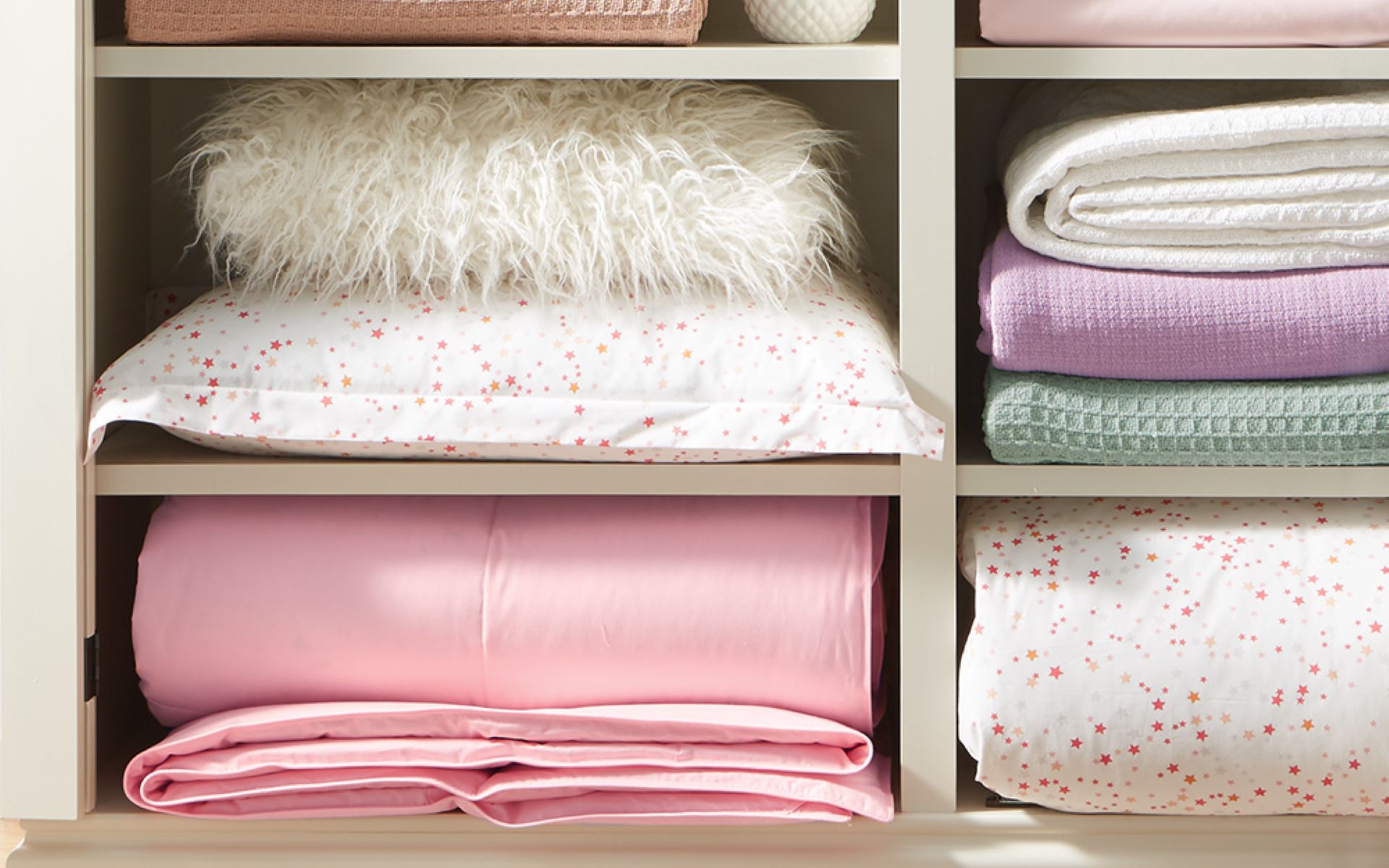

Articles
How To Store Quilts
Modified: February 28, 2024
Learn how to properly store quilts with our informative articles. Keep your quilts safe and preserved for years to come.
(Many of the links in this article redirect to a specific reviewed product. Your purchase of these products through affiliate links helps to generate commission for Storables.com, at no extra cost. Learn more)
Introduction
Quilts are more than just cozy beddings or decorative pieces; they are works of art that often hold sentimental value. Whether you have inherited a family heirloom quilt or have spent hours stitching together a masterpiece of your own, proper storage is essential to preserve its beauty and ensure its longevity.
In this article, we will guide you through the process of storing quilts to protect them from damage caused by dust, pests, moisture, and other factors that can lead to deterioration. We will cover everything from choosing the right storage space to cleaning and preparing quilts for storage, as well as folding techniques, recommended storage materials, and maintaining optimal conditions.
By implementing these storage techniques, you can ensure that your cherished quilts remain in pristine condition and can be enjoyed for generations to come.
Key Takeaways:
- Preserve the beauty and longevity of your cherished quilts by choosing the right storage space, cleaning and preparing quilts, using proper folding techniques, and wrapping them in acid-free materials.
- Ensure the long-term preservation of your quilts by storing them in a climate-controlled environment, avoiding common storage mistakes, and regularly monitoring and maintaining their condition.
Read more: How To Store A Quilt
Choosing the Right Storage Space
When it comes to storing your quilts, selecting the right storage space is crucial for maintaining their condition. Here are some important factors to consider:
- Avoid direct sunlight: Sunlight can cause fading and discoloration of quilts over time. Choose a storage space away from windows or use curtains or blinds to block out direct sunlight.
- Temperature and humidity: Extreme fluctuations in temperature and humidity can be detrimental to quilts. Aim for a stable environment with moderate temperature (between 65-75°F or 18-24°C) and relative humidity (around 50-55%).
- Pest control: Ensure that the storage area is free from pests, such as insects or rodents. Use measures like sealing cracks and crevices, using pest control products, or even considering professional pest control services to protect your quilts.
- Accessible location: Choose a storage space that is easily accessible so that you can periodically check on the condition of your quilts and perform any necessary maintenance.
- Sturdy and clean: Make sure the storage space is clean and free from dust or debris. Avoid areas prone to leaks or water damage, as moisture can lead to mildew or mold growth.
- Space considerations: Depending on the size and quantity of your quilts, consider whether you need a dedicated storage cabinet, closet, trunk, or even a sealed container. Ensure that there is enough space for proper folding and minimal compression.
By selecting an appropriate storage space, you can significantly reduce the risk of damage to your quilts and ensure their long-term preservation.
Cleaning and Preparing Quilts for Storage
Before storing your quilts, it is essential to clean and prepare them properly to prevent any dirt, stains, or pests from causing damage during storage. Here are some steps to follow:
- Inspect for damage: Carefully examine each quilt for any tears, loose threads, or weak seams. Repair any damages before proceeding with the cleaning process.
- Dust and vacuum: Gently remove any loose dust particles by using a soft brush or a low-suction vacuum cleaner with a brush attachment. Be cautious not to apply excessive pressure, as it may damage delicate stitching or embellishments.
- Spot cleaning: If there are any visible stains or spots on your quilts, use a gentle fabric stain remover or a mild soap diluted in water. Test the cleaning solution on an inconspicuous area first to ensure it doesn’t cause any discoloration or damage.
- Wash if necessary: If your quilts are washable, follow the manufacturer’s instructions or use a gentle cycle with a mild detergent. Avoid using harsh chemicals, bleach, or fabric softeners, as they can weaken the fibers or leave a residue.
- Dry thoroughly: After washing, ensure that the quilts are completely dry before storing them. Lay them flat on a clean surface or drape them over a drying rack to air dry. Avoid direct sunlight or excessive heat, as they can cause shrinkage or fading.
- Iron with caution: If necessary, use a low heat setting and a pressing cloth to gently iron the quilts. Be careful around any delicate embellishments or appliques to avoid damage.
- Consider professional cleaning: If your quilts are antique or heavily soiled, it might be best to consult a professional textile conservator for cleaning advice or assistance.
Properly cleaning and preparing your quilts before storage ensures that they remain fresh and free from any potential contaminants that could lead to damage over time.
Folding Techniques
Proper folding is crucial to prevent creases, wrinkles, and unnecessary stress on your quilts during storage. Follow these folding techniques to ensure that your quilts remain in optimal condition:
- Flat fold: Lay the quilt flat on a clean surface and fold it in half lengthwise. Then, fold it in half again or into thirds, depending on the size of the quilt. Avoid folding it too tightly to prevent excessive creasing.
- Rolling: For larger quilts or those with heavy or intricate designs, rolling can be a suitable alternative to folding. Lay the quilt flat, starting from one side, and roll it up gently. Use acid-free tissue paper or cotton fabric to wrap around the rolled quilt to protect it.
- Pillowcase fold: This technique is particularly useful for smaller quilts or those with delicate embellishments. Lay the quilt flat and fold it in half lengthwise. Then, fold it in half again, this time widthwise. Finally, fold it in half or into thirds to create a compact and protected bundle.
- Hanging: If you have sufficient space and the quilt is too large or delicate to fold, consider hanging it on a padded hanger or a quilt rack. Make sure that the hanger or rack is sturdy and does not cause any strain on the quilt. Avoid exposing the quilt to direct sunlight or areas with high humidity.
Regardless of the folding technique you choose, it is essential to use acid-free tissue paper or clean cotton fabric to cushion the folds and prevent any direct contact between the quilt layers. This helps to minimize the risk of creasing and potential color transfer.
Remember to avoid tight or excessive folding, as this can damage the fabric and create permanent creases. Always handle your quilts with clean hands or wear cotton gloves to prevent any oils or dirt from transferring onto the fabric.
By utilizing these folding techniques, you can maintain the integrity of your quilts and make the most out of your storage space.
Wrapping and Packaging Quilts
After folding your quilts, the next step is to wrap and package them properly for storage. This additional layer of protection helps to safeguard your quilts from dust, pests, and potential damage. Consider the following guidelines for wrapping and packaging:
- Acid-free tissue paper: Place a layer of acid-free tissue paper between each fold or roll of the quilt to prevent any direct contact between the fabric layers. Acid-free tissue paper helps to maintain the pH balance of the fabric and minimize the risk of discoloration.
- Archival boxes or acid-free containers: For long-term storage, it’s recommended to use acid-free storage boxes or containers specifically designed for textiles. These containers provide an extra layer of protection against dust, pests, and potential damage from light or moisture. Ensure that the boxes are clean, sturdy, and sealable to prevent any external elements from reaching the quilts.
- Sealed plastic bags: If using plastic bags, make sure they are archival quality and free from harmful chemicals that could potentially deteriorate the fabric. Use bags that are larger than the folded or rolled quilt to prevent tight compression. Avoid storing quilts in plastic bags for extended periods, as they can trap moisture and lead to mildew or mold growth.
- Storage tubes: For rolled quilts or to provide additional support, you can consider using acid-free storage tubes made of sturdy materials such as archival cardboard or PVC. The tubes should be slightly larger than the rolled quilt, allowing for easy insertion and removal.
- Labeling: It is helpful to label the storage boxes, containers, or tubes with relevant information such as the quilt’s name, date, and any special care instructions. This ensures easy identification and helps prevent unnecessary handling and potential damage.
- Store in a cool, dark place: Once the quilts are wrapped and packaged, place them in a cool, dark storage area such as a closet, cabinet, or under-bed storage. Avoid storing them in areas prone to extreme temperature fluctuations or high humidity. Check on the quilts periodically to ensure they remain in good condition.
By taking these steps to wrap and package your quilts properly, you can provide an extra layer of protection and maintain their quality during storage.
Store quilts in a cool, dry place away from direct sunlight to prevent fading and damage. Avoid storing in plastic bags, as they can trap moisture and lead to mildew. Instead, use a cotton or muslin bag for breathable protection.
Read more: How To Store Quilting Fabric
Recommended Storage Materials
Choosing the right storage materials is essential for maintaining the condition of your quilts during storage. Here are some recommended materials to consider:
- Acid-free tissue paper: Acid-free tissue paper is an excellent choice for wrapping individual quilts or placing between folds. It helps to prevent any direct contact between the fabric layers and maintains the pH balance of the quilts, minimizing the risk of discoloration.
- Archival storage boxes or containers: Opt for acid-free storage boxes or containers specifically designed for textiles. These provide a secure and controlled environment for your quilts, protecting them from dust, pests, and light. Look for boxes made from acid-free materials that are sturdy and sealable to prevent external elements from reaching the quilts.
- Archival plastic bags: If using plastic bags, choose archival quality bags that are free from harmful chemicals. Make sure the bags are larger than the folded or rolled quilt to avoid tight compression. However, it’s important to note that plastic bags should not be used for long-term storage as they can trap moisture and lead to mildew or mold growth.
- Acid-free storage tubes: For rolled quilts or additional support, consider using acid-free storage tubes made of archival cardboard or PVC. These tubes provide protection and prevent excessive creasing of the quilts. Ensure that the tubes are slightly larger than the rolled quilt for easy insertion and removal.
- Quality storage racks or shelves: If you choose to hang your quilts, invest in high-quality textile racks or shelves. These should be sturdy and allow for proper support without causing any strain on the quilts. Avoid hanging quilts in areas with direct sunlight, as it can lead to fading and discoloration.
- Labeling materials: Use acid-free tags or labels to provide essential information such as the quilt’s name, date, and any special care instructions. This helps with identification and ensures that the quilts are handled properly during storage and retrieval.
Using these recommended storage materials will help maintain the longevity and condition of your quilts, ensuring that they remain protected and in excellent shape throughout their time in storage.
Storing Quilts in a Climate-Controlled Environment
Properly controlling the climate in your quilt storage area is paramount to preserving the integrity of your quilts. Here are some tips for storing quilts in a climate-controlled environment:
- Maintain stable temperature and humidity: Fluctuating temperatures and high humidity levels can cause damage to quilts. Aim for a stable environment with a temperature between 65-75°F (18-24°C) and a relative humidity of around 50-55%. Avoid storing quilts in areas prone to extreme temperature changes, such as attics or basements.
- Invest in a dehumidifier or humidifier: If you live in an area with high humidity, consider using a dehumidifier to control and reduce moisture levels. Conversely, if you live in a dry climate, a humidifier can help add moisture to the air and prevent excessive drying out of the quilt fibers.
- Avoid areas with direct sunlight: Exposure to direct sunlight can cause fading and discoloration of your quilts over time. Choose a storage area away from windows or use curtains or blinds to block out sunlight.
- Ensure proper ventilation: Good air circulation is crucial for maintaining a climate-controlled environment. Avoid storing quilts in airtight containers or spaces without adequate airflow, as this can increase the risk of mold or mildew growth.
- Monitor temperature and humidity levels: Use a digital hygrometer to regularly monitor the temperature and humidity levels in your storage area. This will allow you to make any necessary adjustments to maintain optimal storage conditions for your quilts.
- Consider professional storage facilities: If you lack a suitable climate-controlled environment in your home, you might consider professional storage facilities that offer controlled temperature and humidity storage units. These facilities are equipped to maintain the ideal conditions for preserving textiles and other valuable items.
By storing your quilts in a climate-controlled environment, you can minimize the risk of damage caused by temperature fluctuations, humidity, and sunlight, ensuring that your quilts remain in pristine condition for years to come.
Avoiding Common Mistakes in Quilt Storage
When it comes to storing quilts, it’s important to avoid common mistakes that could potentially damage or compromise the integrity of your cherished pieces. Here are some common mistakes to steer clear of:
- Using plastic bags or containers: While plastic bags or containers may seem like a convenient storage option, they can trap moisture and lead to the growth of mold or mildew. Instead, opt for breathable materials like acid-free tissue paper or fabric to protect your quilts.
- Storing quilts in attics or basements: Attics and basements are prone to temperature and humidity fluctuations, making them unsuitable for quilt storage. These areas can also be susceptible to pests and water damage. Choose a stable and climate-controlled area in your home for storing quilts.
- Using scented products: Avoid using scented products, such as mothballs or fragrant sachets, as they can leave behind residue or chemicals that may harm the fabric. Opt for natural alternatives like lavender or cedar chips, placed in breathable pouches, if you prefer additional protection against pests.
- Stacking or compressing quilts: Avoid stacking heavy items or compressing quilts tightly together, as this can lead to creases, wrinkles, or stress on the fabric. Instead, opt for flat or rolled storage methods, allowing each quilt enough space to breathe and remain undisturbed.
- Skipping proper cleaning: It’s important to clean and prepare quilts adequately before storage. Skipping this step can lead to stains setting in, attracting pests, or even causing fabric degradation over time. Always follow the cleaning recommendations for your specific quilt type.
- Not periodically inspecting stored quilts: Even in proper storage, it’s essential to periodically inspect your stored quilts for any signs of damage or pests. Regularly check on their condition, refold or reroll if needed, and address any issues promptly to prevent further damage.
- Forgetting to document and label: Keep a record of your stored quilts, including their names, dates, and any special history or care instructions. This will help you easily identify and retrieve quilts without unnecessary handling or potential damage.
By avoiding these common mistakes in quilt storage, you can ensure that your quilts remain protected, preserved, and ready to be enjoyed and cherished for years to come.
Monitoring and Maintaining Stored Quilts
While proper storage techniques are crucial for preserving the condition of your quilts, it’s equally important to periodically monitor and maintain them to ensure their longevity. Here are some tips for monitoring and maintaining stored quilts:
- Regular inspections: Set a schedule to inspect your stored quilts at least once every six months. Look for any signs of damage, such as tears, loose threads, or pest infestations. Address any issues promptly to prevent further deterioration.
- Avoid excessive handling: Limit the amount of handling of your stored quilts to reduce the risk of accidental damage. When inspecting or re-arranging them, make sure your hands are clean, or consider wearing clean cotton gloves to prevent oils or dirt from transferring onto the fabric.
- Refold or reroll: Over time, folded quilts may develop creases or wrinkles. Periodically refold them along different lines or reroll them to distribute any stress on the fabric and minimize the potential for permanent creases.
- Avoid direct contact with wood or metal: If storing quilts in cabinets or containers made of wood or metal, be cautious of direct contact. These materials can release acids or cause staining, so it’s advisable to layer quilts with acid-free tissue paper or fabric.
- Control pests: Regularly check for signs of pests, such as droppings or insects. If you notice any infestation, address it immediately by using safe and appropriate pest control methods. Avoid excessive use of chemicals, as they can damage the fabric.
- Monitor temperature and humidity: Continue monitoring the temperature and humidity levels in your storage area. Make adjustments as needed to maintain the optimal range for quilt preservation. Use a digital hygrometer to accurately measure these conditions.
- Avoid storage near water sources: Keep your stored quilts away from water heaters, pipes, or any potential sources of water leakage. Water damage can cause irreparable harm to the fabric and lead to mold or mildew growth.
- Follow proper handling techniques: When taking quilts out of storage or moving them, always use proper handling techniques. Support the quilt’s weight evenly and avoid pulling or dragging it across surfaces to prevent stress on the fabric or seams.
- Update storage materials: Over time, check the condition of your storage materials such as boxes, tissue paper, or containers. Replace any worn-out or damaged items to ensure continued protection for your quilts.
- Document changes and treatments: If any changes or treatments are made to your stored quilts, such as repairs or cleaning, keep a record of these updates. This information will help to track the quilt’s history and aid in future care and maintenance.
By consistently monitoring and maintaining your stored quilts, you can proactively address any issues and ensure that they remain in excellent condition for years to come.
Read more: How To Store Quilts And Blankets
Conclusion
Proper storage is crucial for preserving the beauty and integrity of your cherished quilts. By implementing the right techniques and utilizing suitable materials, you can protect your quilts from damage caused by dust, pests, sunlight, and fluctuations in temperature and humidity.
Choosing the right storage space, cleaning and preparing quilts before storage, using proper folding techniques, and wrapping them in acid-free materials are essential steps to take. Storing quilts in a climate-controlled environment and avoiding common mistakes can further ensure their long-term preservation. Regularly monitoring and maintaining stored quilts, including periodic inspections, refolding or rerolling, and controlling pests, will help prevent potential damage or deterioration over time.
Remember, your quilts are more than just fabric and thread; they represent memories, creativity, and artistry. By following these guidelines, you can continue to enjoy and pass down your treasured quilts for generations to come.
Frequently Asked Questions about How To Store Quilts
Was this page helpful?
At Storables.com, we guarantee accurate and reliable information. Our content, validated by Expert Board Contributors, is crafted following stringent Editorial Policies. We're committed to providing you with well-researched, expert-backed insights for all your informational needs.

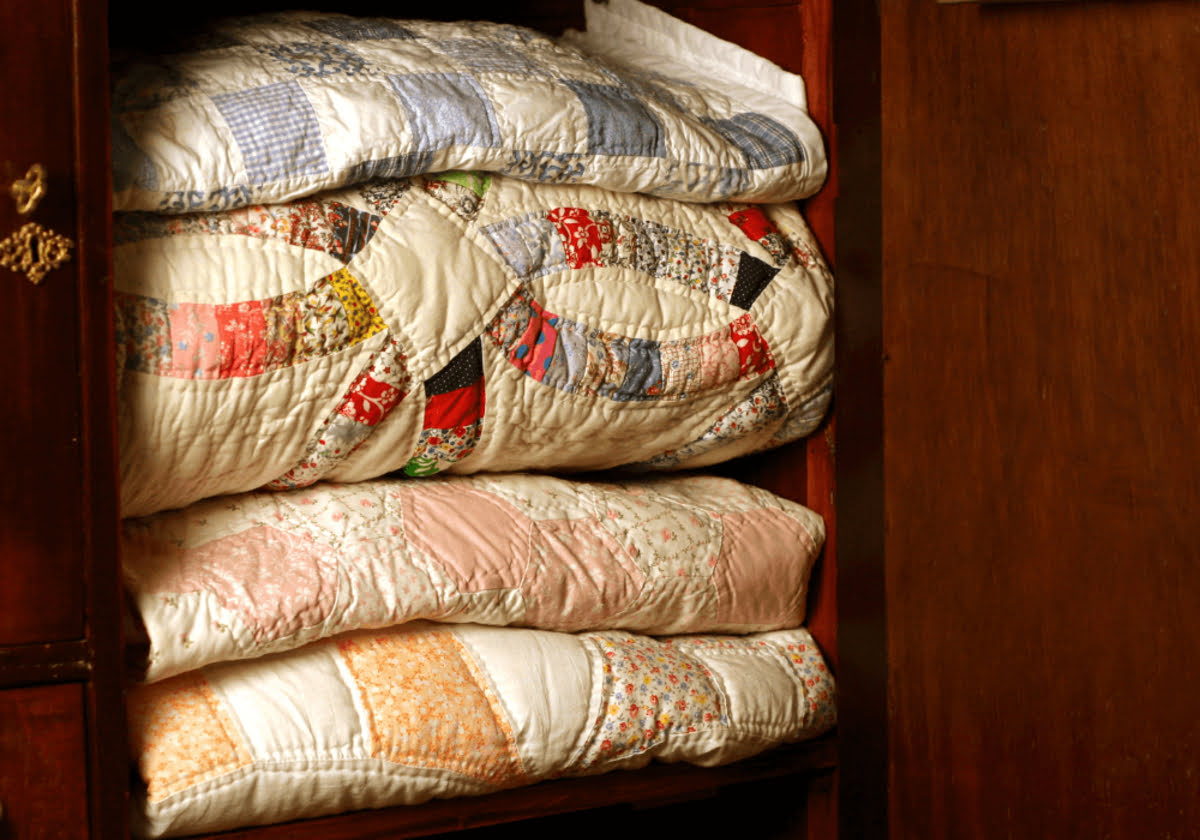
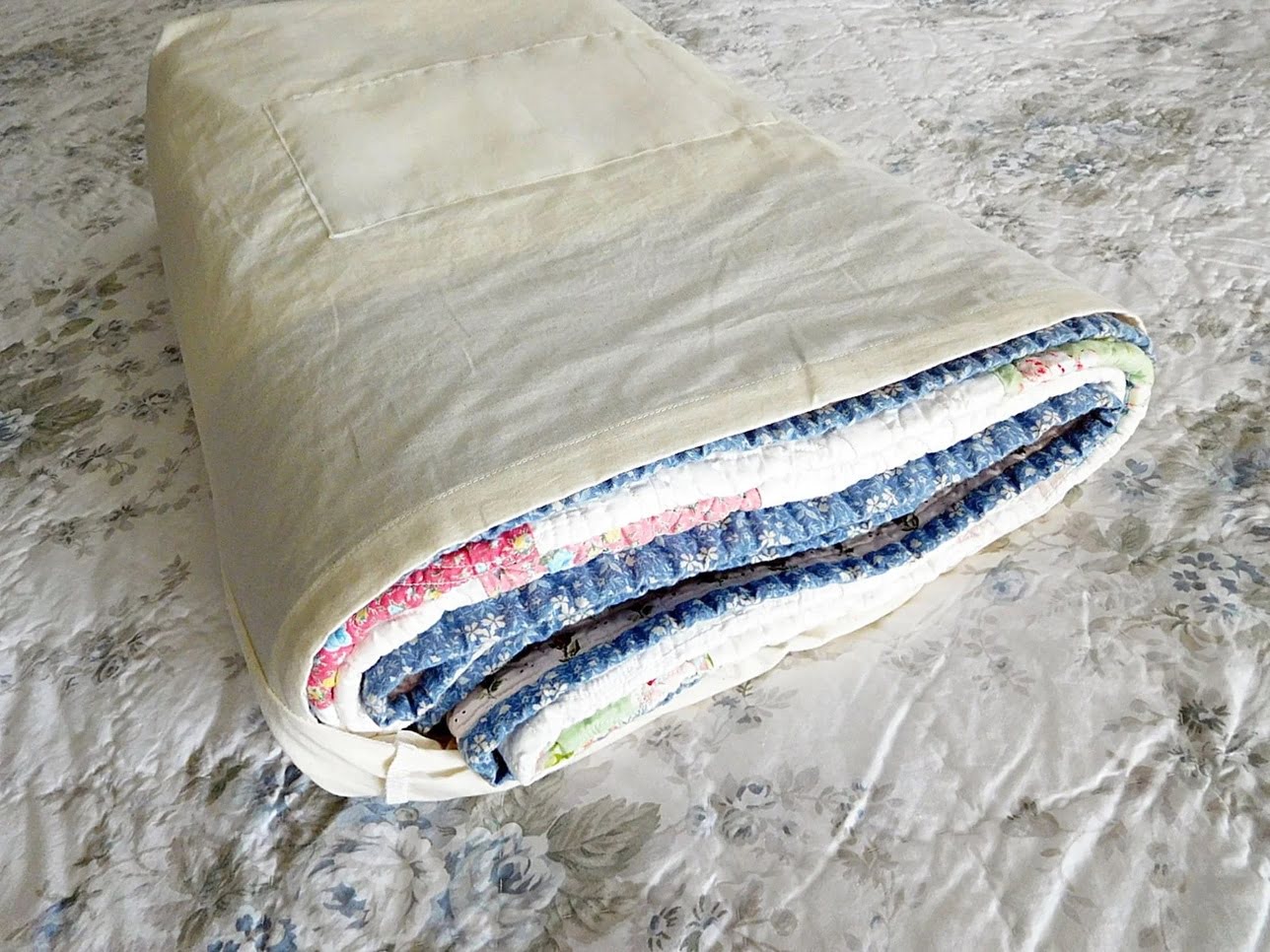
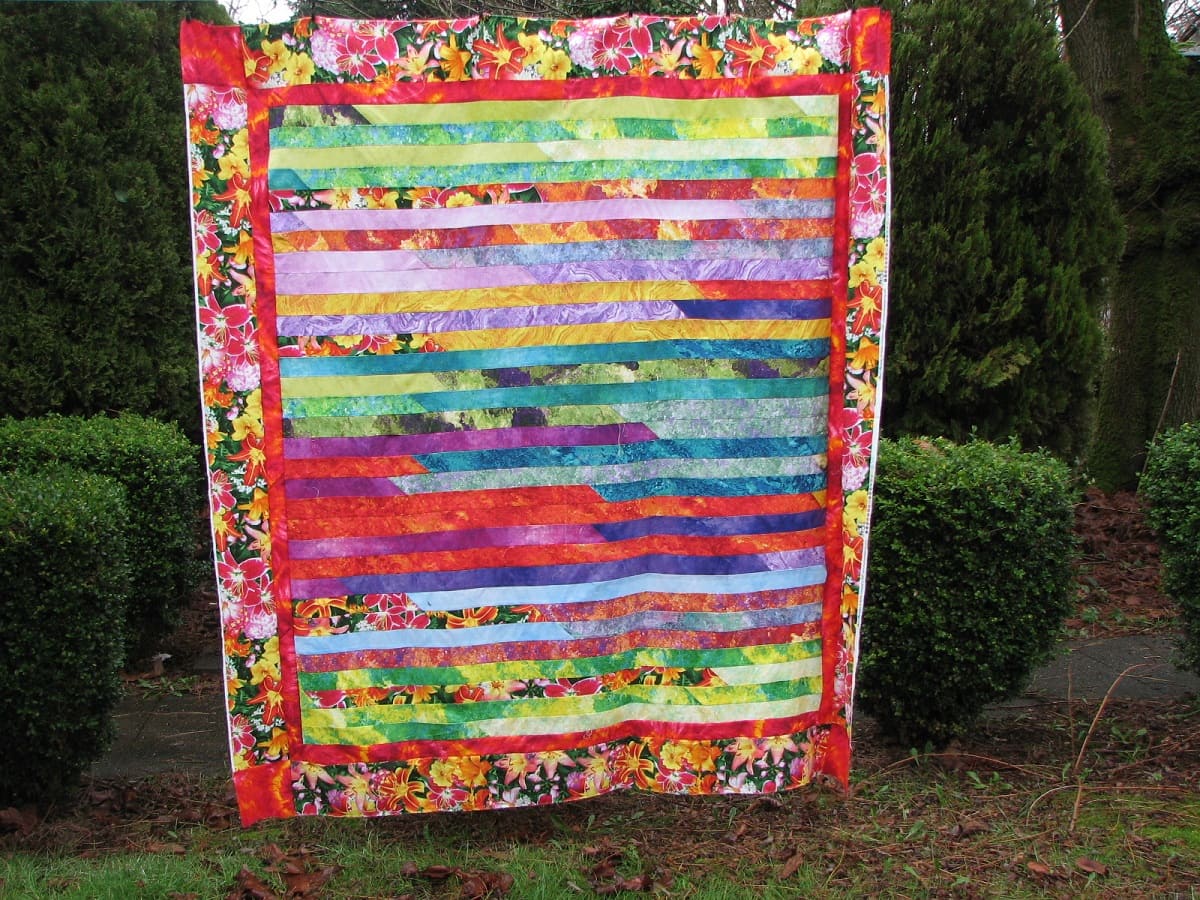


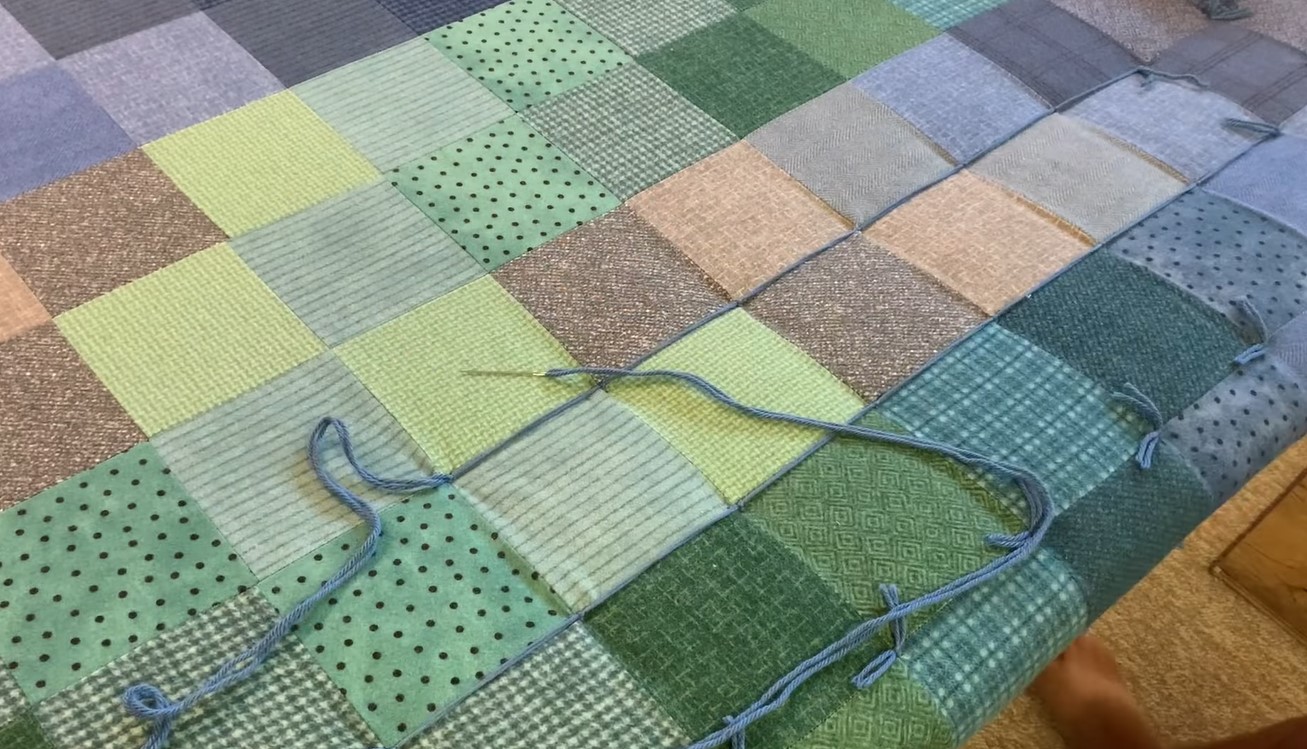
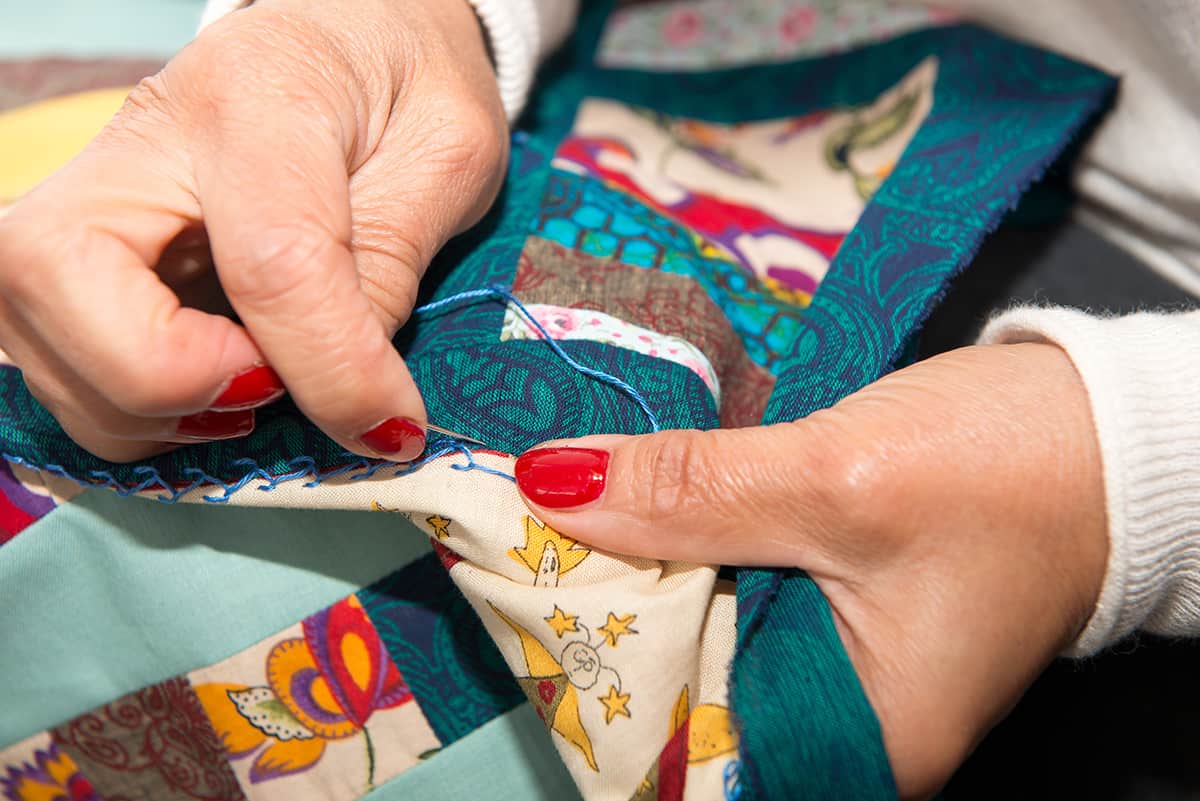
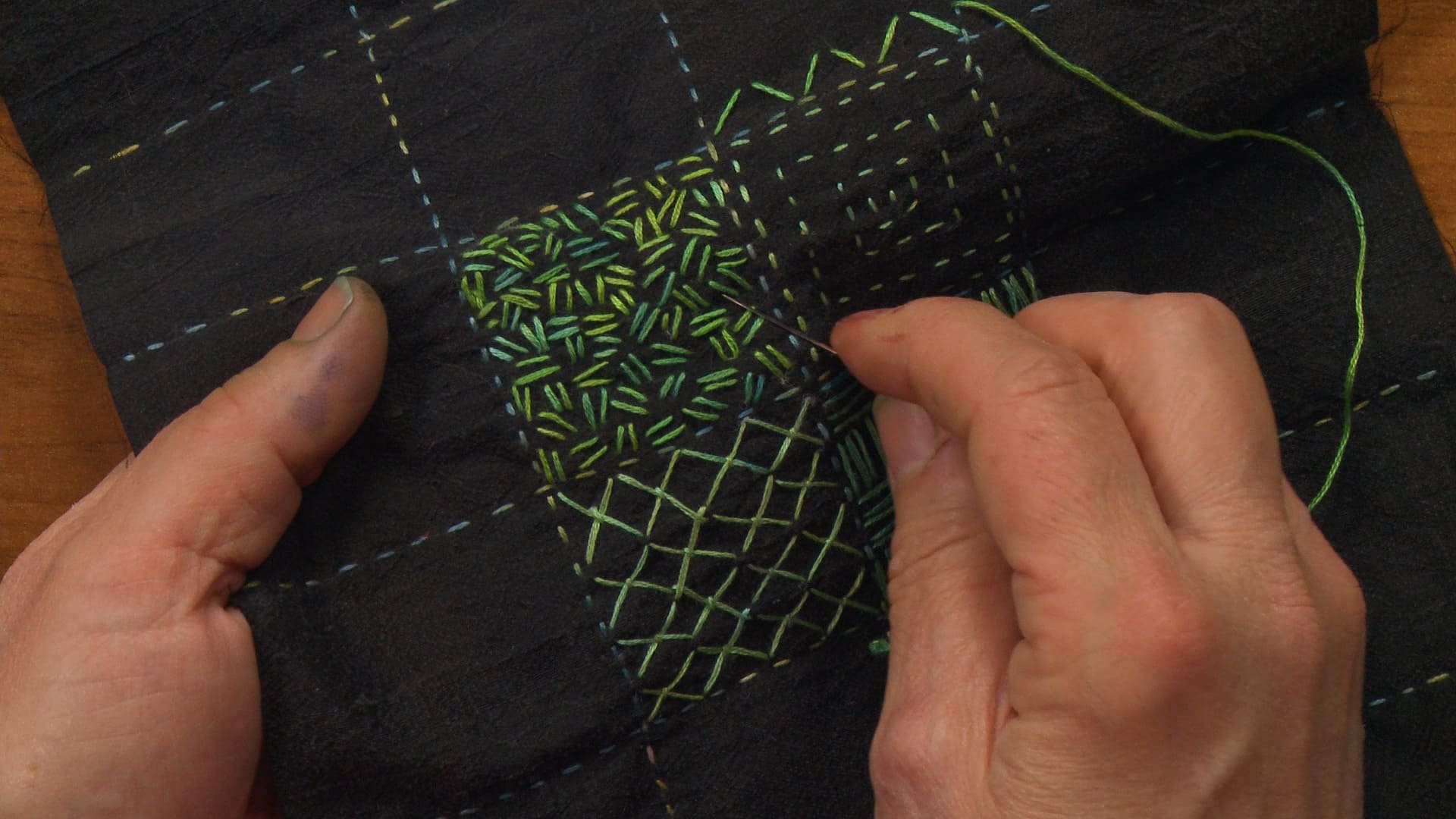

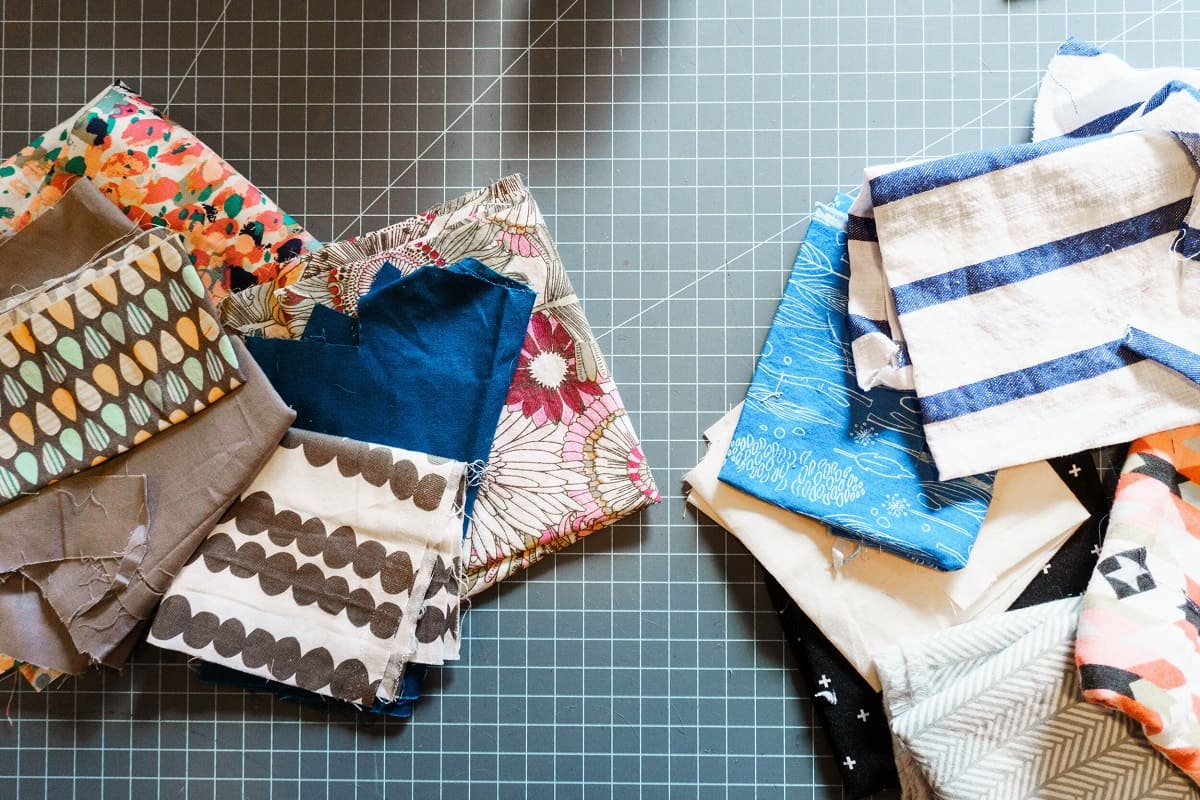
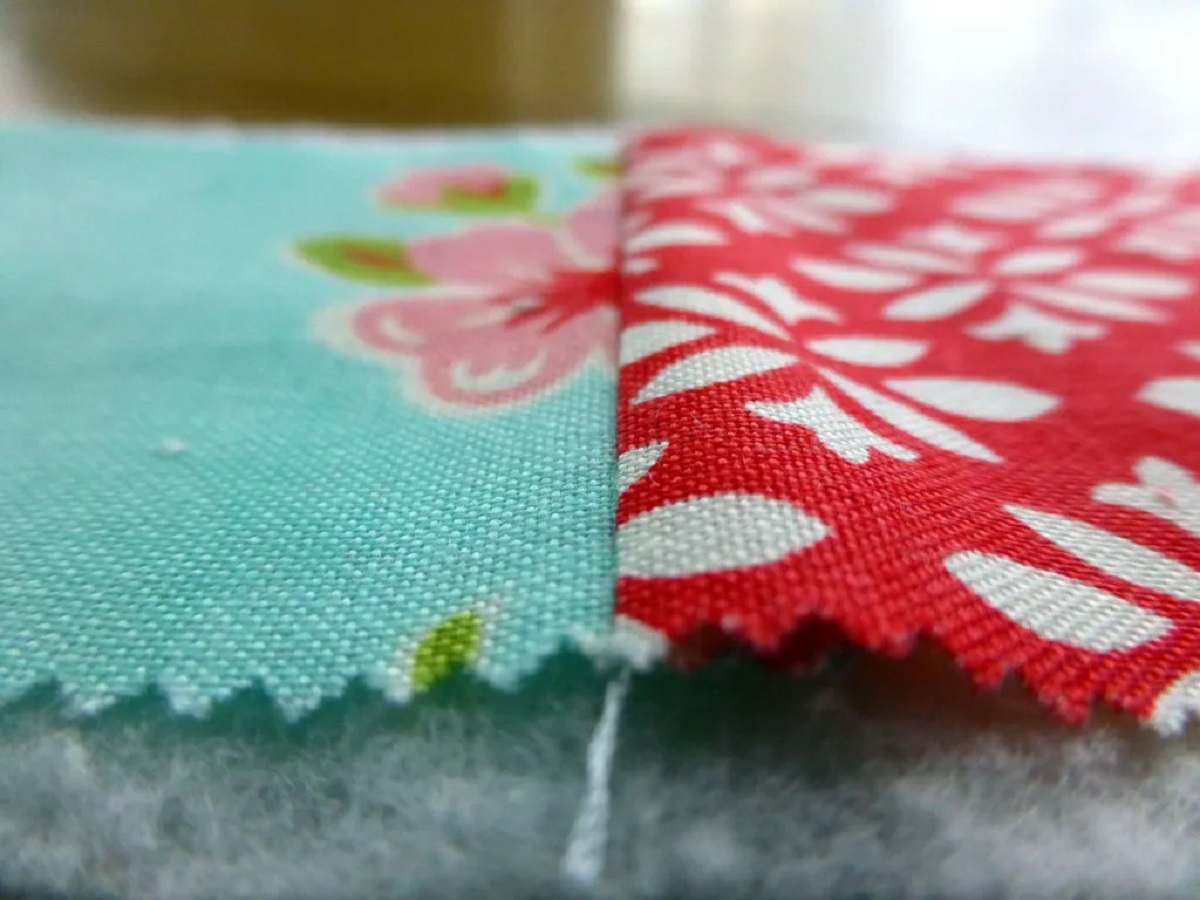
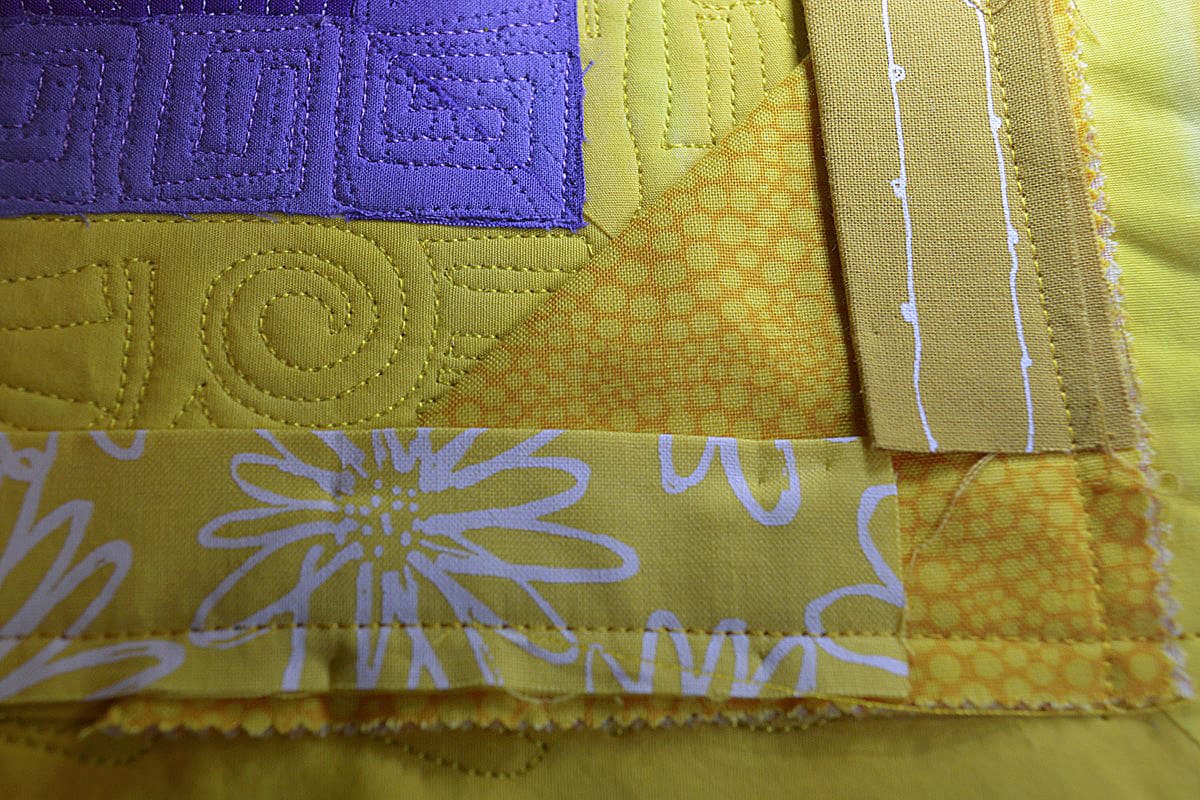

0 thoughts on “How To Store Quilts”